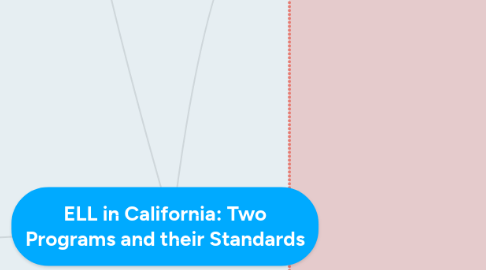
1. SEI (Structured English Immersion
1.1. Teachers must meet the Highly Qualified Credentialing Requirements
1.2. a. Classroom setting
1.3. b. Learners who have not acquired reasonable fluency in English
1.4. i. “reasonable” defined by school district
1.5. ii. California English Language Development Test (CELDT) used to help determine placement
1.6. c. Nearly all classroom instruction in English
1.7. d. Curriculum & presentation of material designed for children who are learning the language
1.8. STANDARDS ARE SAME AS EDL
2. OBJECTIVES
2.1. Ensure that English learners, within a reasonable period of time, achieve the same rigorous grade-level academic standards that are expected of all students.
2.2. Ensure that English learners acquire full proficiency in English as rapidly and effectively as possible and attain parity with native speakers of English.
2.3. By high school graduation, students to have developed the readiness for college, careers, and civic life; attained the capacities of literate individuals; become broadly literate; and acquired the skills f or living and learning in the 21st century
3. ELM (English Language Mainstream) also known as... ELD ( English Language Development) Those who are "reasonably proficient"
3.1. Recommended Learning Programs
3.2. Teachers must meet the Highly Qualified Credentialing Requirement
3.3. Beginning ELD Standards
3.3.1. Listening & Speaking
3.3.1.1. Comprehension
3.3.1.1.1. Answer simple questions with one- to two-word responses.
3.3.1.1.2. English grammatical forms and sounds (e.g., single words or phrases).
3.3.1.1.3. Ask and answer questions by using phrases or simple sentences.
3.3.1.1.4. Retell stories by using appropriate gestures, expressions,
3.3.1.1.5. Use common social greetings and simple repetitive phrases independently
3.3.1.1.6. Respond to simple directions and questions by using physical actions and other means of nonverbal communication
3.3.1.2. Organization and Delivery of Oral Communication
3.3.1.2.1. Begin to be understood when speaking, but usage of standard English grammatical forms and sounds (e.g., plurals, simple past tense, pronouns [he or she]) may be inconsistent.
3.3.1.2.2. Orally communicate basic personal needs and desires (e.g., “May I go to the bathroom?”). Orally communicate basic personal needs and desires (e.g., “May I go to the bathroom?”).
3.3.2. Reading
3.3.3. Writing
3.4. Intermediate ELD Standards
3.4.1. Listening & Speaking
3.4.1.1. Organization & Delivery of Oral Communication
3.4.1.1.1. Make oneself understood when speaking by using consistent standard English grammatical forms and sounds; however, some rules are Communication not followed (e.g., third-person singular, male and female pronouns).
3.4.1.2. Comprehension & Organization & Delivery of Oral Communication
3.4.1.2.1. Participate in social conversations with peers and adults on familiar topics by asking and answering questions and soliciting information.
3.4.1.3. Comprehension
3.4.1.3.1. Ask and answer instructional questions by using simple sentences.
3.4.1.3.2. Ask and answer instructional questions with some supporting elements
3.4.1.3.3. Listen attentively to stories and information and identify important details and concepts by using both verbal and nonverbal responses.
3.4.2. Reading
3.4.3. Writing
3.5. Advanced ELD Standards
3.5.1. Listening & Speaking
3.5.1.1. Comprehension
3.5.1.1.1. Demonstrate understanding of most idiomatic expressions (e.g., “Give me a hand”) by responding to such expressions and using them appropriately.
3.5.1.2. Organization & Delivery of Oral Communication
3.5.1.2.1. Negotiate and initiate social conversations by questioning, restating, soliciting information, and paraphrasing the communication of others.
3.5.2. Reading
3.5.3. Writing
